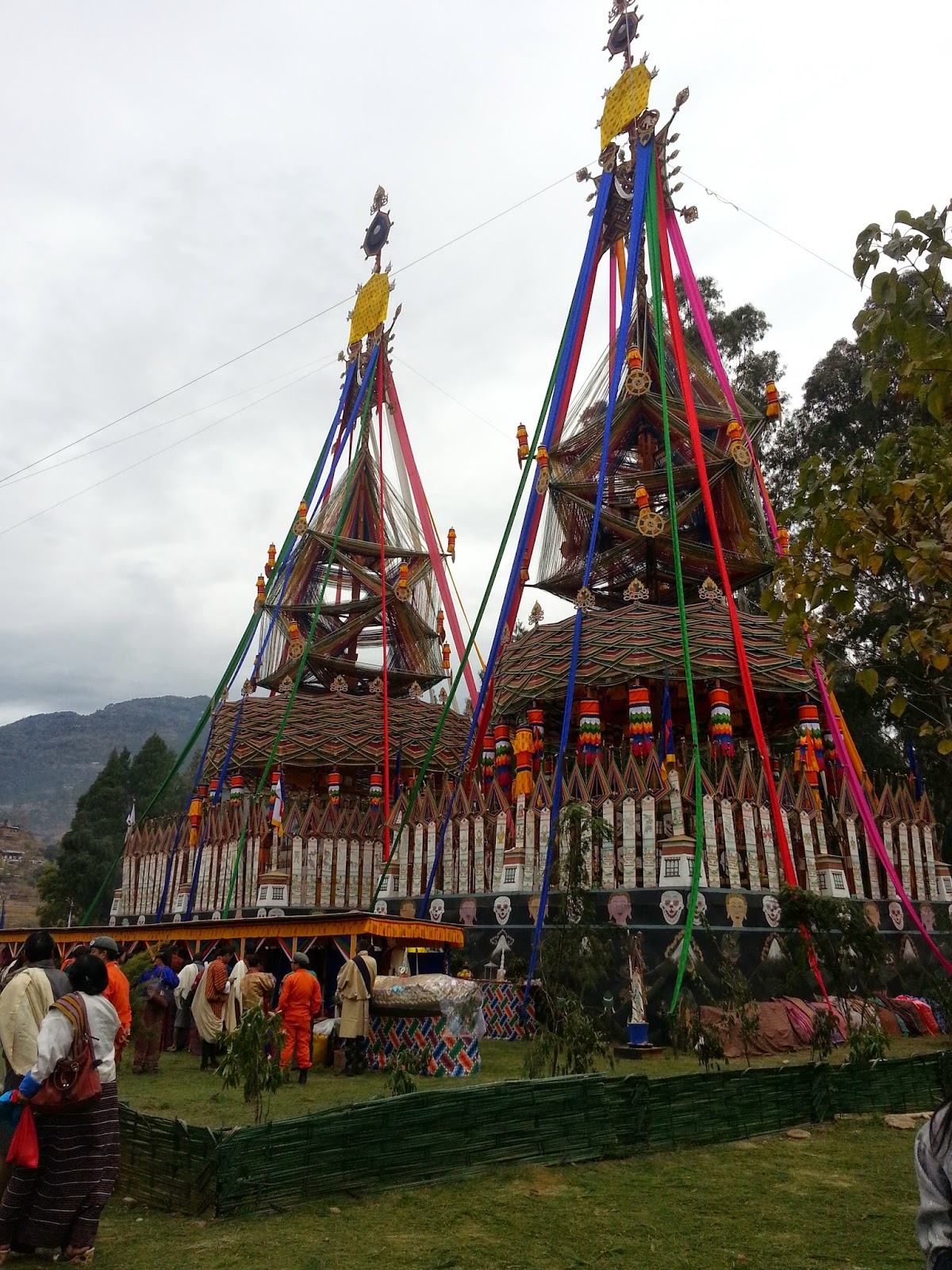I had not known that there
was a Nalanda monastery here in Bhutan. I thought that there was only one - the
famous Buddhist monastery/University of the past which was in Bihar,
India.
So while in Punakha, I took
the opportunity to visit the Nalanda monastery of Bhutan. Located just below
Talo Monastery and about 15 km away from Punakha town, the monastery is
situated on a sunny slope overlooking the Punakha valley and the highway
leading down from Dochula.
The upper temple of Nalanda, Punakha
So here, for the knowledge and information of any who may be interested,
I take the opportunity to share with you the history and interesting
information I obtained from the notice board about the Nalanda monastery in
Bhutan.
History
about the Nalanda monastery in Punakha
In 1757 the 9th Je Khenpo
Shakya Rinchen, considered to be a reincarnation of Rechungpa (one of the two
extraordinary disciples of Milarepa in Kagye Buddhist lineage), founded the
Nalanda Monastery in Punkaha.
At the time when this monastery was
built, the ancient Nalanda University in India was a very holy and sacred
place. Bhutanese people made great efforts to visit this special holy place at
least once in their lifetime. There were no roads and people had to walk to
India. As a result the journey was very unsafe and people were at risk to be
robbed or even worse. Once in India, people from Bhutan faced many difficulties
including dealing with differences in food, culture, and language as well as
being in an unfamiliar place. As a way of accommodating people’s desire to
visit Nalanda, Gyalwa Shakya Rinchen Rinpoche built this monastery in Bhutan
and named it after the Nalanda University in India.
Gyalwang Shakya Rinchen had completed
the building of Phajoding in the monastery above Thimphu valley. Upon its
completion he was wondering where the next site to build the next monastery.
The monk body was moving their residence from Thimphu to Punakha, as was the
traditional way to spend months in Punakha. When he was walking over Dochula
mountain pass he saw eight vultures flying to a specific area that has now
become the present Nalanda monastery. He through that maybe these vultures were
the eight original scholars (pandits) from the Nalanda University in India.
After seeing it he asked for a confirmation in a dream. Consequently the eight
scholars appeared in his dream and gave a teaching to him. Based on seeing of
the vulture choosing this site and the dream of the eight scholars, this site
was chosen as the area in which to build Nalanda monastery.
During Gyalwang Shakya Rinchen’s lifetime,
Nalanda monastery in Bhutan was a thriving Buddhist teaching institution with a
renowned reputation. After Gyalwang Shakya Rinchen’s final thugham or Maha
Samadhi, slowly the teachings stopped and the great institute lay dormant.
Nalanda Monastery was restarted several times with different eachers but after
the teachers departed the monastery would again be less inhabited with monks.
Eventually the uncle of His Majesty,
the Fourth King Jigme Singye Wangchuck, Lopen Yoenten Gyaltsen requested
permission from the King to open an official Buddhist Shedra (institute). In
1991 His Majesty gave permission for Nalanda Monastery to become a Shedra. Then
in 1992 two lopens (teachers) began the Shedra with 20 monks. Over time the
number of lopens and students increased. In 2014 there are 6 lopens and 125
students that range from 8 to 28 years old.

Mural of Lord Buddha
There
are eight statues made of clay inside the lower shrine room of the upper temple
(lhakhang). Here is their story:
The Eight
Disappearing Indians
While constructing the original temple
of Nalanda in Bhutan, Gyalwang Shakya Rinchen Rinpoche saw eight Indians from
India in an adjacent valley to the building site. He soon realised that these
eight Indians must be the eight scholars (pandits) of the original Nalanda
University in India. When he went to find them to see if it was true, they had
disappeared. The disappearance of the Indians, led to the confirmation that
these indeed where the eight great scholars of Nalanda University. In order to
praise and honour them for their auspicious appearance, he built eight clay
statues. These statues can be seen inside the lower shrine room of the upper
temple (lhakhang).
Late afternoon view of Punakha valley
from Nalanda monastery




